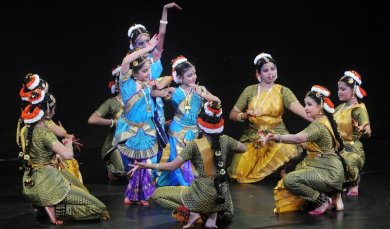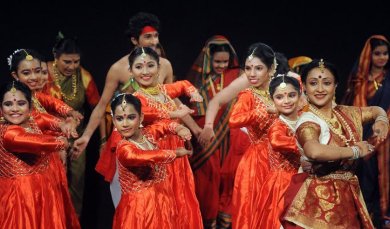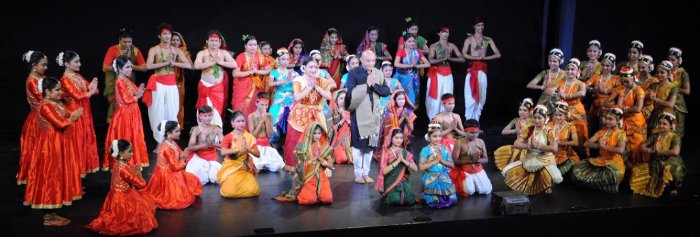
|   |

|   |
Anurati in varied dance styles June 9, 2016 Dance is an expression of self and emotion that is an integral aspect of the Indian heritage of dance. The strongest emotion that binds people together is love. Dr. Tushar Guha's Nrityanjali defined love as mutual respect and understanding. Anurati (love) explored these various dimensions – togetherness, love for self (body, mind, soul) through the physicality of movements (nritta), romanticism, love for nature, love for the almighty, love for the community 

Anurati was reflected through Kathak, Bharatanatyam, Creative and Indian Folk dances, by the young dancers of Nrityanjali and Dr. Anonna Guha in the one hour presentation with 57 artistes performed at the Experimental Theatre, NCPA, Mumbai on 19th May. The performance started with rhythmic music where the opening dance’s pace and the fusion of Kathak, Bharatanatyam, Creative and Folk dance, enthralled the audience. This was followed by Madhurashtakam performed by Tushar Guha, Anonna Guha, Sangita Sawant in Kathak, Bharatanatyam and Creative dance style. The divinity was reflected in the expressions of the dancers and the beautifully designed complementary costumes. This was followed by the traditional Kathak repertoire expressing love for the physicality of movements. The taal, pirouettes, baant and arrival at the sam of the young dancers were impressive. Mallari, a part of Bharatanatyam Margam, depicted the procession of the devotees with the palanquin, musicians and dancers expressing their love for the Lord. The Kathak performance on the melodious Sargam also had the pramalu and tode tukde woven in it. This was followed by Natesha Kautuvam dedicated to Lord Shiva. The splendour of Nataraja’s dance with ghungroos, laya, gati and speed evoked love - Anurati - and awe. The Bharatanatyam choreography was innovative and the 6 dancers executed it well. “Ghir ghir aaye badra” (Thumri) depicted the onset of monsoon where the nayika was seen romanticizing life and her beloved. This group presentation in Kathak style with three dancers was set to lift the mood and made the audience sense the droplets of rain, almost making them yearn for the monsoon. Shabdam portrayed naughty Krishna’s endearing pranks in stealing butter and breaking pots of water being carried by the Gopis. It also brought out the bravery acts of little Krishna in dealing with the snake Kaliya and the evil Pootana. The performance then moved to the Mangalagaur, the folk dance performed by ladies in Maharashtra and brought out the love and joy of togetherness with the community. The Adivasi Kummi, the last presentation of folk dance from Tamil Nadu, was at an energetic rhythmic pace using sticks as props by both men and women and had the audience swaying to the beat.  The final dance presentation brought all the 57 artistes on stage with their gurus Tushar Guha, Anonna Guha and Sangita Sawant. The presentation, through the graceful movements of Kathak, the evocative movements of Bharatanatyam and creative and energetic folk dances, charmed the audience. Each performance moved seamlessly to the other and the different styles of dancing came together in Anurati. |